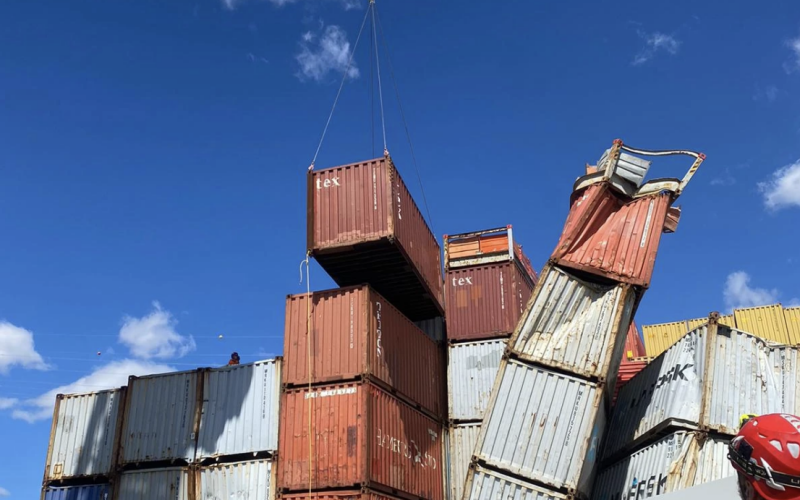The March 26 ship allision and collapse of the Francis Scott Key Bridge in Baltimore seriously disrupted shipping and supply chains on the U.S. East Coast. But overall, the port closure has not caused an increase in ocean freight container shipping rates, according to an April 8 analysis Aby Xeneta, an ocean freight rate benchmarking and intelligence platform.
Average spot rates from Far Asia into U.S. Northeast ports including Baltimore have fallen slightly, less than 1% since the bridge collapse, at $5,421 per 40’ shipping container, according to the Xeneta summary.
Meanwhile, Xeneta says its look at other East Coast ports such as New York/New Jersey shows rates from the Far East have decreased by 3% in the same period.
Average spot rates from North Europe to the U.S. Northeast ports have fallen by a larger 8% in the same period to stand at $2,357 per FEU. When including other East Coast ports, rates have decreased by 4%.
Peter Sand, Xeneta’s chief analyst, said “spot rates have not reacted but that doesn’t mean shippers with cargo heading to Baltimore are not affected – on the contrary they are seeing containers arriving at ports they were not expecting.”
“The majority of containers will now be handled at New York/New Jersey because many of the ships originally bound for Baltimore would have been stopping there anyway, which is perhaps why we haven’t seen an upwards impact on rates.
“Ocean freight container shipping rates may not have increased following the bridge collapse, but this incident is yet another problem for shippers to handle on top of all the other disruptions impacting supply chains at the moment, including the ongoing diversions in the Red Sea region and drought in the Panama Canal.”
The U.S Army Corps of Engineers says it has a realistic timeline to have the Fort McHenry Channel open by the end of May, restoring deepwater traffic to Baltimore terminals.
Corps engineers “are aiming to reopen the permanent, 700-foot-wide by 50-foot-deep federal navigation channel by the end of May, restoring port access to normal capacity,” according to an April 4 statement from the agency.
The U.S. Department of Transportation is using $60 million in emergency funding for the federal response. Biden announced that another $8 million in grants will go for infrastructure improvements at Sparrows Point, where ships were still calling at the 3,300-acre Tradepoint Atlantic tract below the Key Bridge crossing.
But Sand believes importers into the U.S. East Coast could be set for further disruptions in 2024 due to labor negotiations.
The International Longshoremen’s Association’s six-year contract with the United States Maritime Alliance, which represents port terminal operators and ocean carriers on the East Coast, expires on Sept. 30, with a new agreement yet to be negotiated.
“The threat of labor strikes on the East Coast has the potential to cause far more disruption to ocean freight shipping than the collapse of the Francis Scott Key Bridge,” according to Sand. “The clock is ticking and if no agreement is reached then the implications will be significant and widespread disruption at U.S. East Coast ports.
"This would almost certainly see rates increase for ocean freight container services and could see some shippers choosing to head back to the U.S. West Coast or Mexico for imports.”




